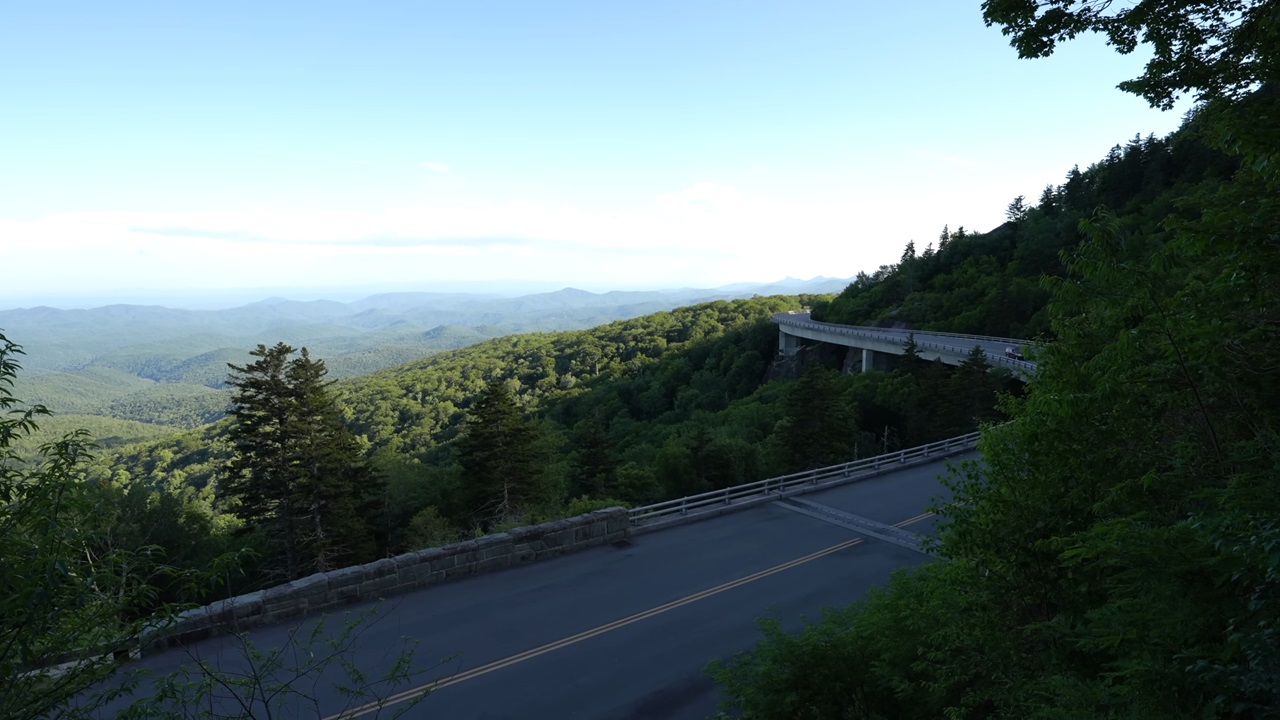The Blue Ridge Parkway runs for 469 miles through the Appalachian Mountains, connecting Shenandoah National Park in Virginia to the Great Smoky Mountains in North Carolina. It is one of the most scenic roads in the country, offering mountain views, quiet forests, and access to dozens of trails and overlooks.
This route gives you the chance to travel without distractions. No traffic lights. No cities. Just a two-lane road through protected landscapes and small communities with deep cultural roots. Along the way, you pass historic sites, visitor centers, and local stops worth exploring.
If you want a road trip with natural beauty, peaceful views, and a slower pace, the Blue Ridge Parkway delivers. It is built for travelers who want something real, not rushed.
What Makes the Blue Ridge Parkway Stand Out
Built in 1936 during Franklin D. Roosevelt’s New Deal, it became a legacy project that combined job creation with landscape preservation. Today, it stands as the longest linear park in the country.
Along the way, you’ll pass quiet river valleys, wide mountain views, and rolling farmland that reflect the depth and variety of the Appalachian landscape. Each curve brings new scenery—wildflower-covered meadows, shaded tunnels of trees, or panoramic overlooks that open up to miles of unbroken ridgelines.
Spring and summer bring lush green views and wildflowers. Mid to late October is the best time to catch peak fall color, when the entire route transforms with reds, oranges, and golds. The parkway also features more than 22 key stops, including Whitewater Falls, the tallest waterfall east of the Rockies, and Rocky Knob, where hikers can explore over 15 miles of trails.
This road was designed for the long view. It’s not about where you’re going, but what you see along the way.
Top Attractions on the Blue Ridge Parkway
The Blue Ridge Parkway offers more than a drive through the mountains. It’s a journey filled with natural landmarks, cultural touchpoints, and outdoor experiences worth stopping for. Here are the places that define the route.
Blue Ridge Music Center (Milepost 213)
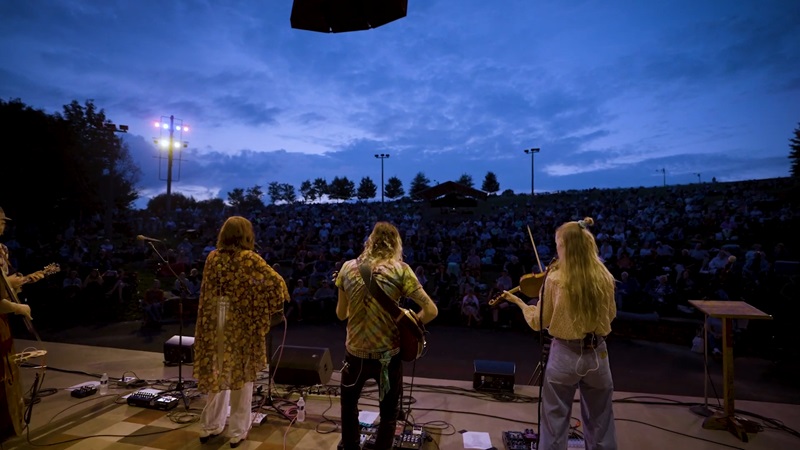
A tribute to Appalachian sound and heritage. Located near the Virginia–North Carolina border, this center features live bluegrass and old-time performances during the season, alongside museum exhibits that explore the region’s musical history.
Crabtree Falls
One of the most scenic waterfalls on the Parkway. You can take the short 1.8-mile hike for a direct view or opt for the 2.5 to 3-mile loop to explore the surrounding forest. The 60-foot cascade is a top photo spot.
Cumberland Knob
The first construction site of the Parkway back in 1935. Today it’s a quiet area with trails, picnic spaces, and a strong sense of history. A good stop for stretching your legs and stepping into the story of the road.
Doughton Park
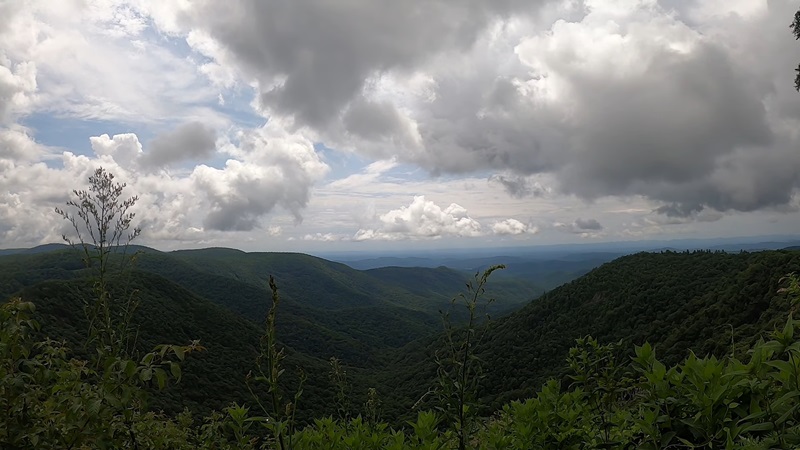
A wide-open stretch ideal for wildlife viewing. It’s home to deer, foxes, and many native bird species. The mix of trails and open meadows makes it a peaceful and rewarding detour.
Rocky Knob (Mileposts 161.1 to 176.1)
Over 4,800 acres of rugged terrain and about 15 miles of hiking trails. Rocky Knob is less crowded and great for those who want time in the woods without distraction. It also has primitive campsites and scenic picnic spots.
Linn Cove Viaduct
An engineering landmark that curves around Grandfather Mountain. Completed in 1987 to preserve the mountain’s integrity, it offers some of the most dramatic views on the route. Bring a camera.
Explore Park
Located near Roanoke, this 1,100-acre park combines outdoor recreation with history. Biking and hiking trails wind past restored cabins and interpretive exhibits. It’s a good option for active travelers and families.
Folk Art Center (Milepost 382)
A showcase of Appalachian craft. Inside, you’ll find handmade furniture, quilts, pottery, and live demonstrations. The artists represent a living tradition, and the center serves as both gallery and workshop.
Linville Falls (Milepost 316.4)
Easily accessible and always impressive. Several short trails lead to different overlooks with views of the falls and the Linville Gorge. It’s a must-stop if you want a classic Parkway photo and a short hike.
Outdoor Adventures on the Blue Ridge Parkway
The Blue Ridge Parkway is built for people who want to move, not just drive. Along its 469-mile stretch, the landscape opens up to hundreds of hiking trails, scenic overlooks, and places to get off the pavement.
Whether you’re here for a short walk or a full-day climb, the range of outdoor options is broad and accessible.
Trails Worth the Stop
- Craggy Pinnacle Trail: A short 1.4-mile hike with a huge payoff. The summit delivers clear 360-degree views of the surrounding mountains, especially dramatic at sunrise or sunset.
- Black Mountain Crest Trail: One of the toughest hikes in the region, but also one of the most rewarding. This high-elevation route takes you across multiple peaks and is best suited for experienced hikers looking for a challenge.
- Linville Falls: The most iconic waterfall on the Parkway. While the main overlook is just a one-mile walk, a longer 4-mile route gives access to five different viewpoints. The 150-foot drop is visible from several angles and always worth the time.
- Crabtree Falls: This trail leads to a 70-foot waterfall through a forested loop. The hike is about 3 miles round trip, with a steady climb that makes it feel remote but manageable.
Ways to Slow Down
The Parkway isn’t just for checking hikes off a list. Wildlife sightings are common, from deer and wild turkeys to the occasional black bear.
Picnic areas are spread throughout the route, offering quiet spots to stop and take in the surroundings. Many trails are kid-friendly and well-marked, making this a solid destination for families as well.
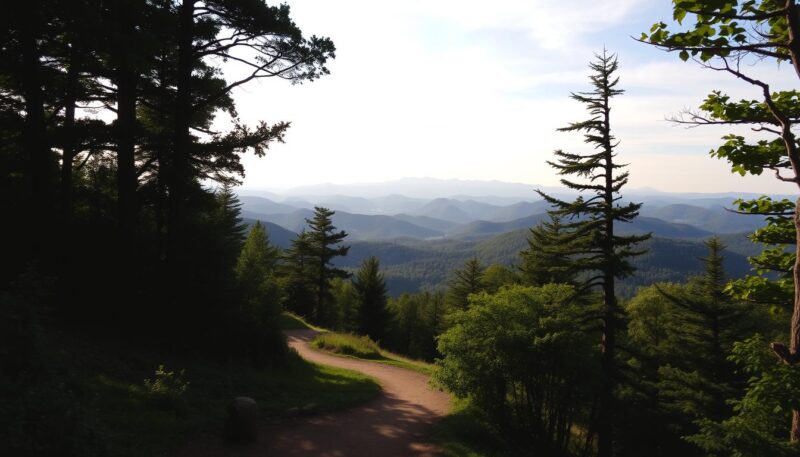
Planning Your Blue Ridge Parkway Road Trip
A trip along the Blue Ridge Parkway works best with a little planning. The route stretches nearly 470 miles through varied terrain and elevation, so timing, weather, and logistics can shape your experience. Here’s what to know before you go.
Best Time to Visit
Spring and fall offer the most dramatic scenery. Late April through early June brings blooming rhododendrons, dogwoods, and fresh green canopies. Mid-October is peak foliage season, when the mountains turn red, gold, and orange. These are also the most popular times, so expect heavier traffic during weekends.
Summer (June to August) sees the highest visitor numbers. Trails, overlooks, and picnic areas can get crowded midday, especially near popular stops. Early mornings and late afternoons offer quieter roads and better light for photos. Winter can be beautiful but unpredictable, with closures due to snow or ice at higher elevations.
What to Know Before You Drive
Speed limits are low for a reason. Most of the Parkway is capped at 45 mph, with many sections posted at 35. This keeps the drive safe and lets you enjoy the views without rushing.
Cell service is spotty or nonexistent along large stretches of the route. Download offline maps or carry a printed guide. Visitor centers are spaced out but helpful—they provide trail maps, local updates, and restroom access.
Campgrounds and facilities have seasonal hours, often closing in winter or operating on limited schedules in early spring and late fall. Always check availability ahead of time and have a backup plan in case weather or maintenance affects your itinerary.
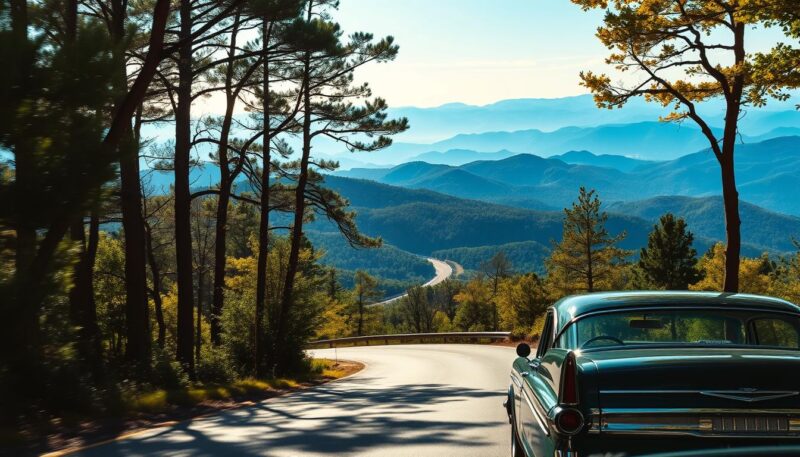
Why the Blue Ridge Parkway Should Be Your Next Road Trip Destination
The Blue Ridge Parkway offers more than just a scenic route through the Appalachian Mountains. It’s a chance to step away from busy highways and move through a region shaped by nature, history, and deep cultural roots. Every mile brings something worth seeing.
A Slower, Better Way to Travel
Unlike crowded interstates, the Parkway moves at a different pace. The 469-mile road includes 272 designated overlooks—on average, one every two miles. The speed limit rarely exceeds 45 mph, giving you space to actually take in the views. Whether you’re passing through spring wildflowers or autumn’s peak color, the landscape changes constantly and rewards those who take their time.
Real Appalachian Culture
What sets this route apart is its connection to the communities along the way. Towns like Blowing Rock and Asheville offer more than places to stop—they reflect the character of the region. Local galleries, bluegrass shows, and family-run diners show how the traditions of the Blue Ridge are still alive.
Make time for events like the Old Fiddlers’ Convention in Galax, a gathering of musicians that has been running for nearly a century. Or visit the Biltmore Estate, one of the country’s most unique landmarks, and explore nearby trails and waterfalls that blend history with the outdoors.
Conclusion
A road trip along the Blue Ridge Parkway is not just about the views. It’s about the connection you make with the land, the culture, and the people rooted in this stretch of the Appalachians. From high mountain overlooks to small-town diners, every stop tells part of a larger story.
You’ll find your own rhythm here. Hike a quiet trail in the morning, explore a folk art shop in the afternoon, and end the day with live bluegrass and something good to eat. Whether it’s a doughnut in Asheville or a tasting menu in Staunton, what stays with you is the mix of simplicity and craft.
The Parkway is open year-round with no admission fee. You don’t need much to start—just time, curiosity, and a willingness to slow down. Once you’re on the road, the rest comes naturally.

